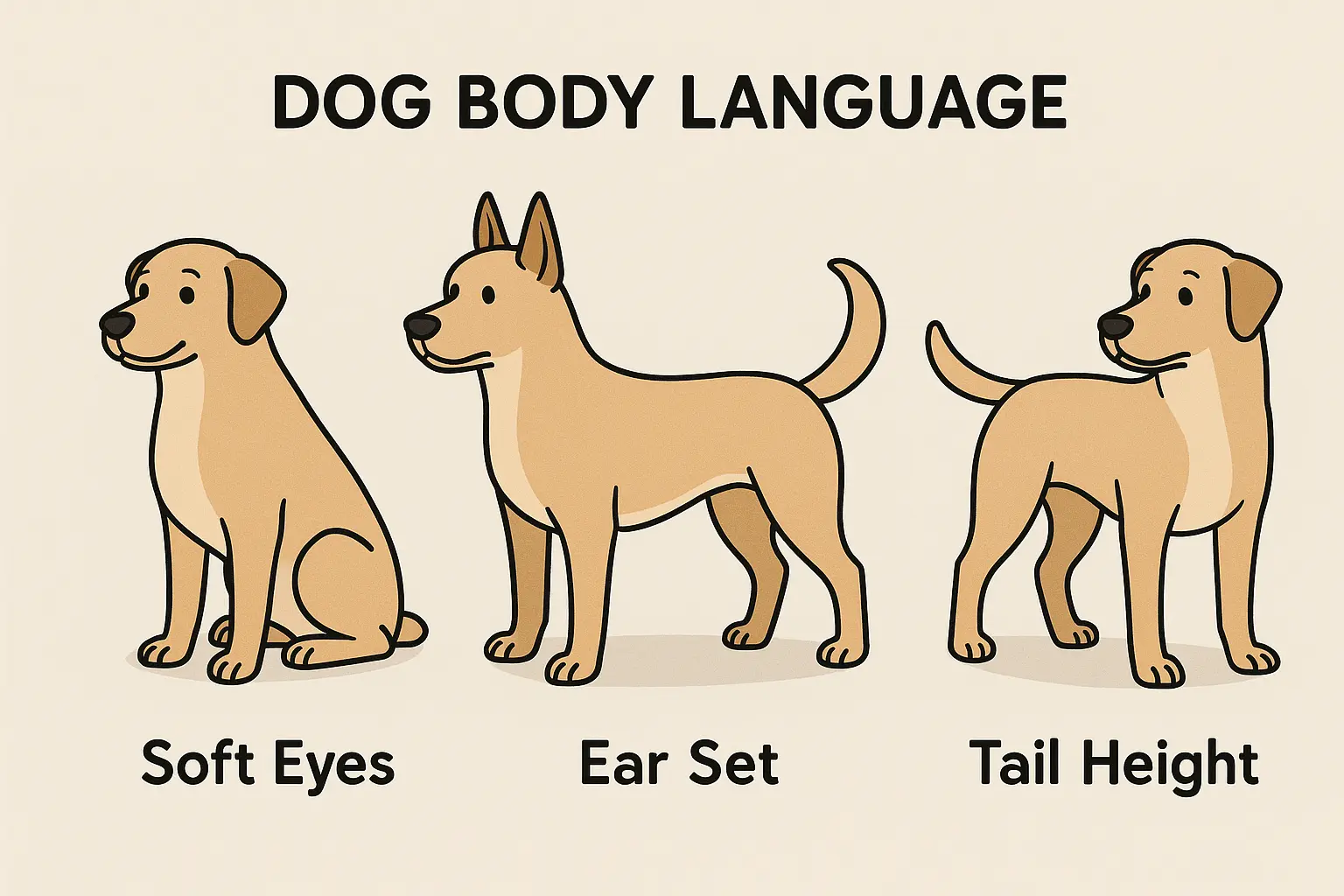Dog Body Language: 7 Silent Signals
Reading Signals
Dogs don't use words, but their body writes in bold.
Look at eyes, ears, tail, mouth, and posture together—not in isolation.
Context matters: location, people, dogs nearby, and recent events shape meaning.

7 Silent Signals Every Dog Uses
1. The Soft Stare
Slow blinks and relaxed eyes say “I feel safe.”
Whale eye—visible white at the corners—often signals brewing stress.
2. Ear Position
Forward ears show curiosity or alertness in a neutral context.
Pinned-back ears often mean fear, uncertainty, or appeasement.
3. Tail Language
Loose, sweeping wags at hip height usually mean relaxed friendliness.
Fast, high, stiff wagging signals high arousal—not always friendliness.
4. Mouth & Tongue
A relaxed open mouth reads like a canine smile.
Tight lips, lip licking, or out-of-context yawns can signal stress.
5. Body Posture
Loose, wiggly movement suggests playfulness and comfort.
Forward weight shift can precede lunging, barking, or chasing.
6. Paw Lift
A still, raised forepaw often signals hesitation or uncertainty.
7. Raised Hackles
Raised hackles indicate strong arousal: fear, excitement, or tension.
Context and the rest of the body tell you which emotion it is.
How to Respond to These Signals
Soft stare: blink slowly back and speak softly.
Whale eye or pinned ears: add space and lower intensity.
High, stiff wag: redirect to a simple known cue and reward calm.
Relaxed open mouth: praise and continue the interaction.
Consistent, calm responses teach your dog that you understand.
Stress vs. Excitement
Stress and excitement can look similar—watch recovery speed to tell them apart.
Stress lingers and escalates; excitement peaks and settles with guidance.
If stress persists, consult a qualified trainer or your veterinarian.
Want a quick read on your pup's style? Try our 🚀 Free Dog Personality Test and discover a whole new side of your best friend.
Related Reads
Tune into vocal cues with Understanding Your Dog’s Bark.
Spot everyday affection in 10 Ways Dogs Say “I Love You”.
Learn sidewalk signals in What Dog Walks Uncover.
FAQ
Is a wagging tail always friendly?
No. Check speed, height, and stiffness—stiff and
high often means arousal.
What are calming signals?
Subtle stress-reducing behaviors like blinking, turning
away, sniffing, or slow movement.
When should I seek professional help?
If stress signs persist or escalate, contact
your veterinarian or a qualified trainer.
For deeper reading on canine body language, see the AVSAB's resources and Turid Rugaas' work on calming signals for practical, science-aligned guidance.